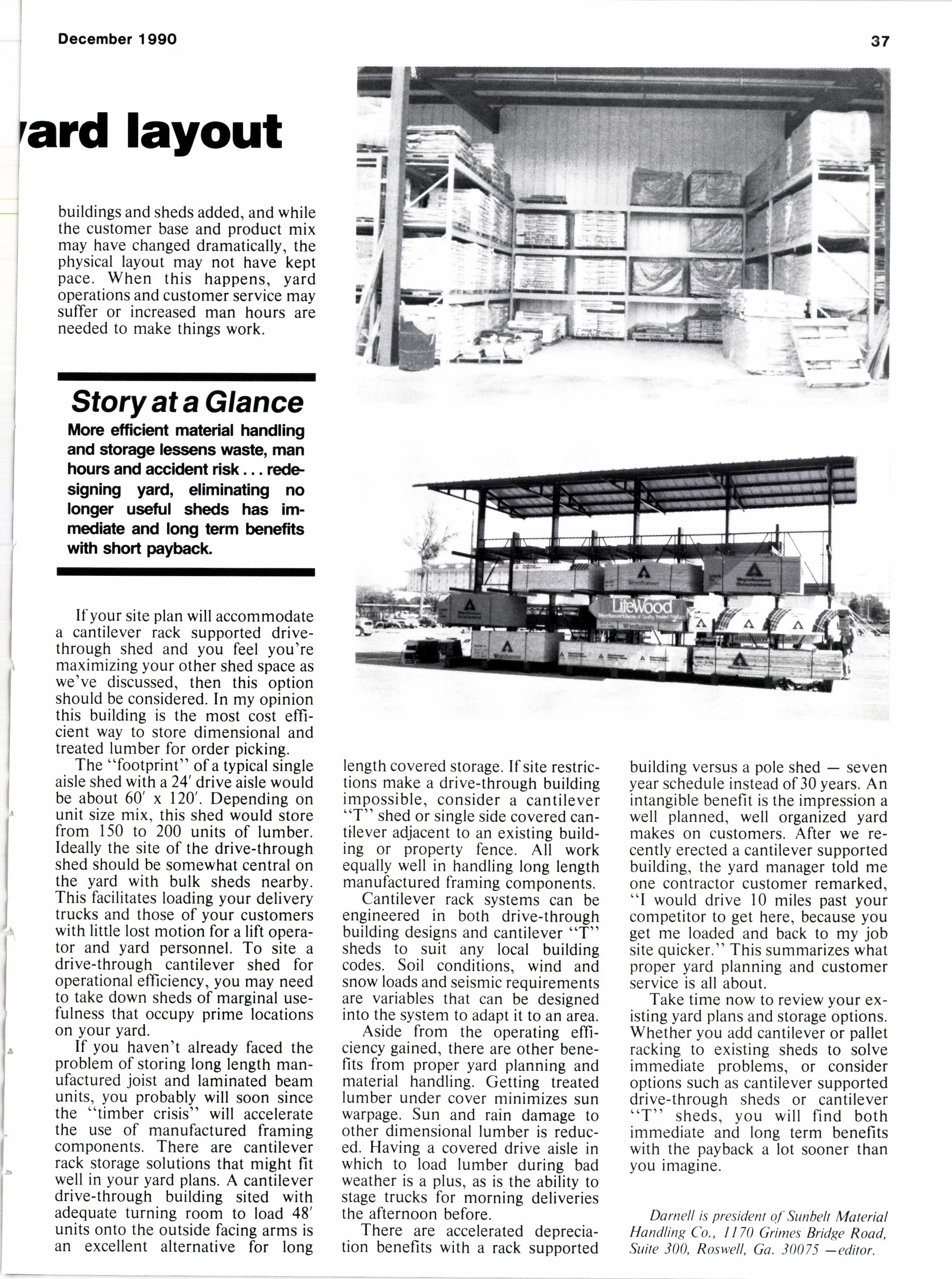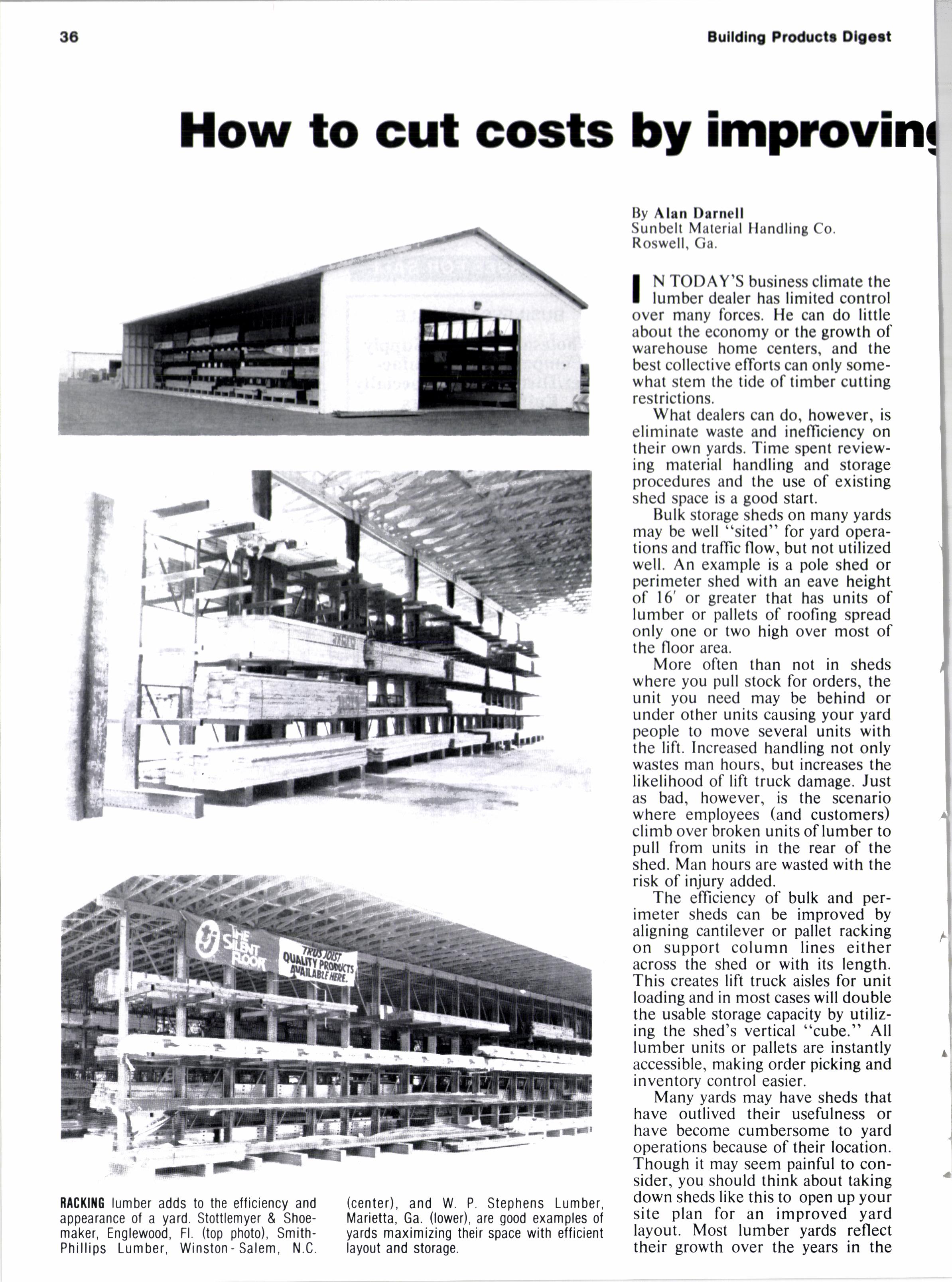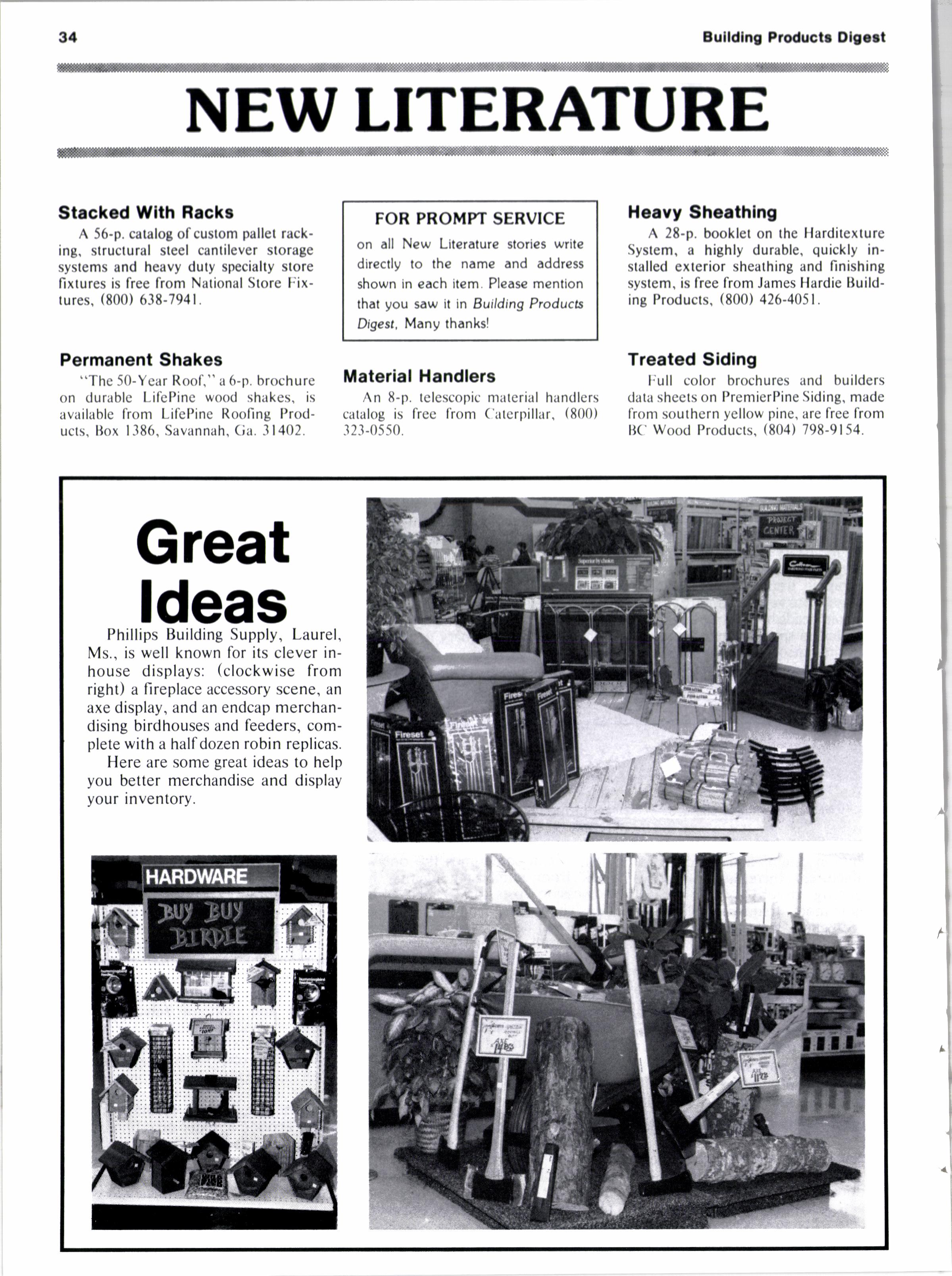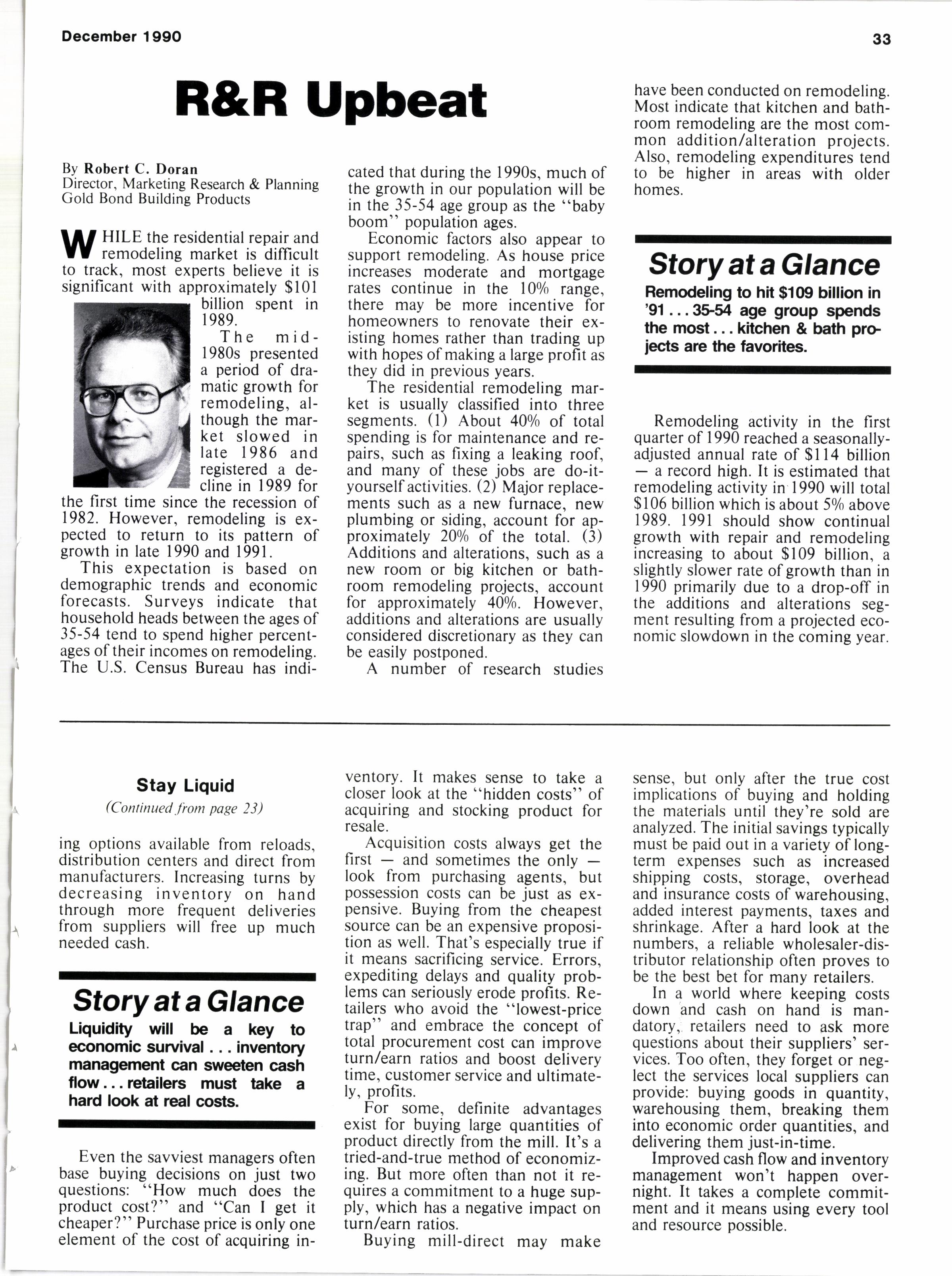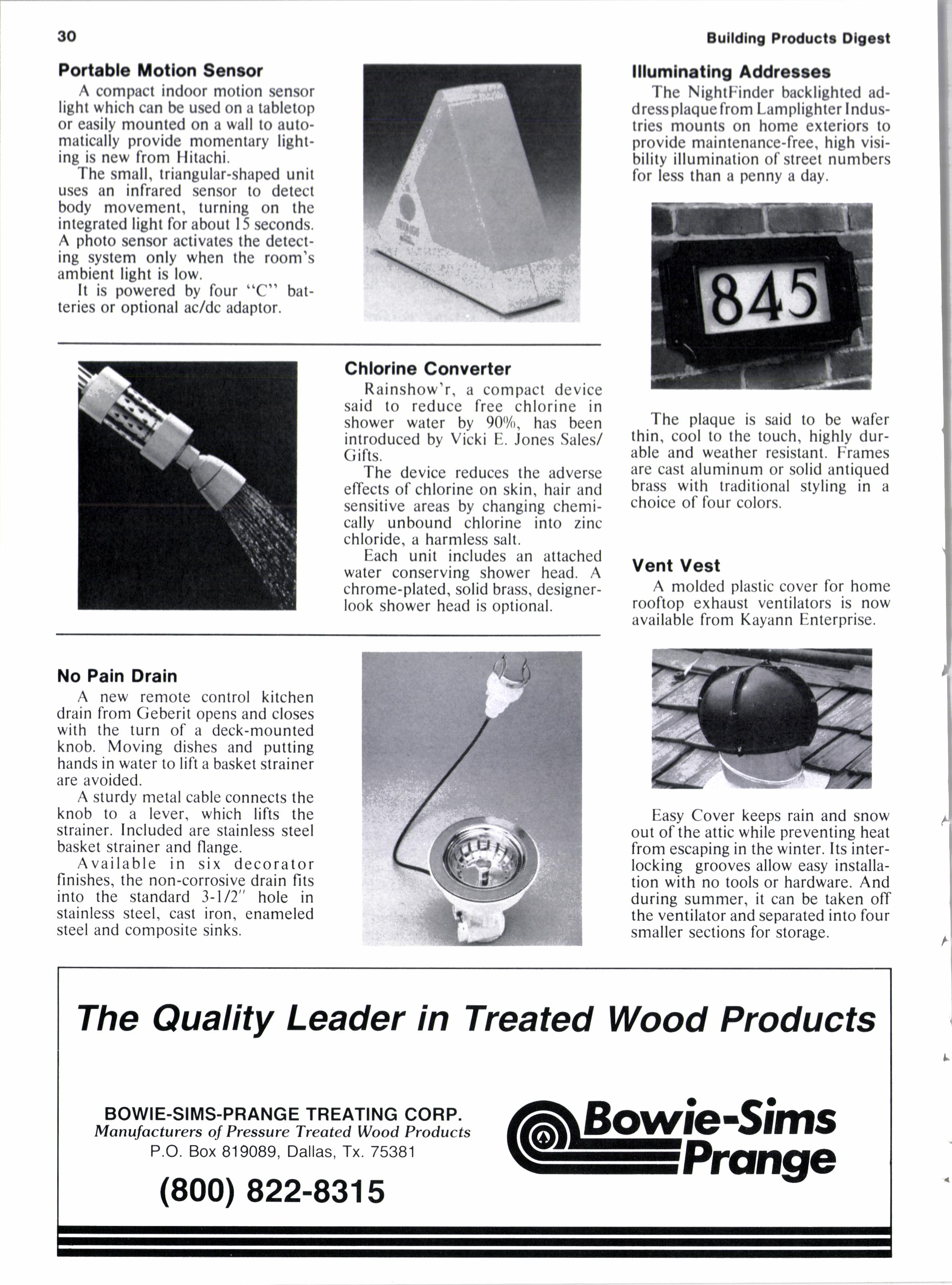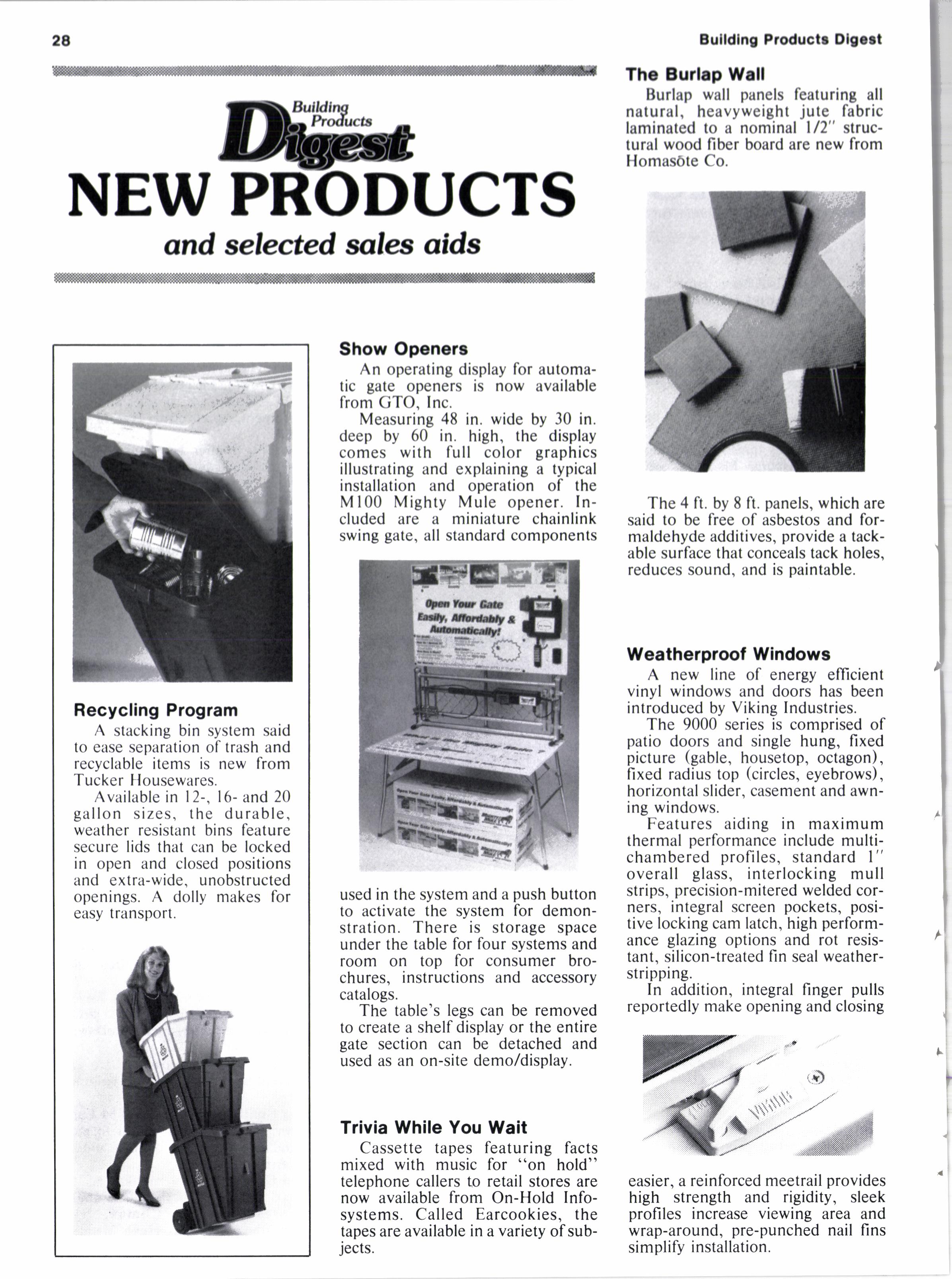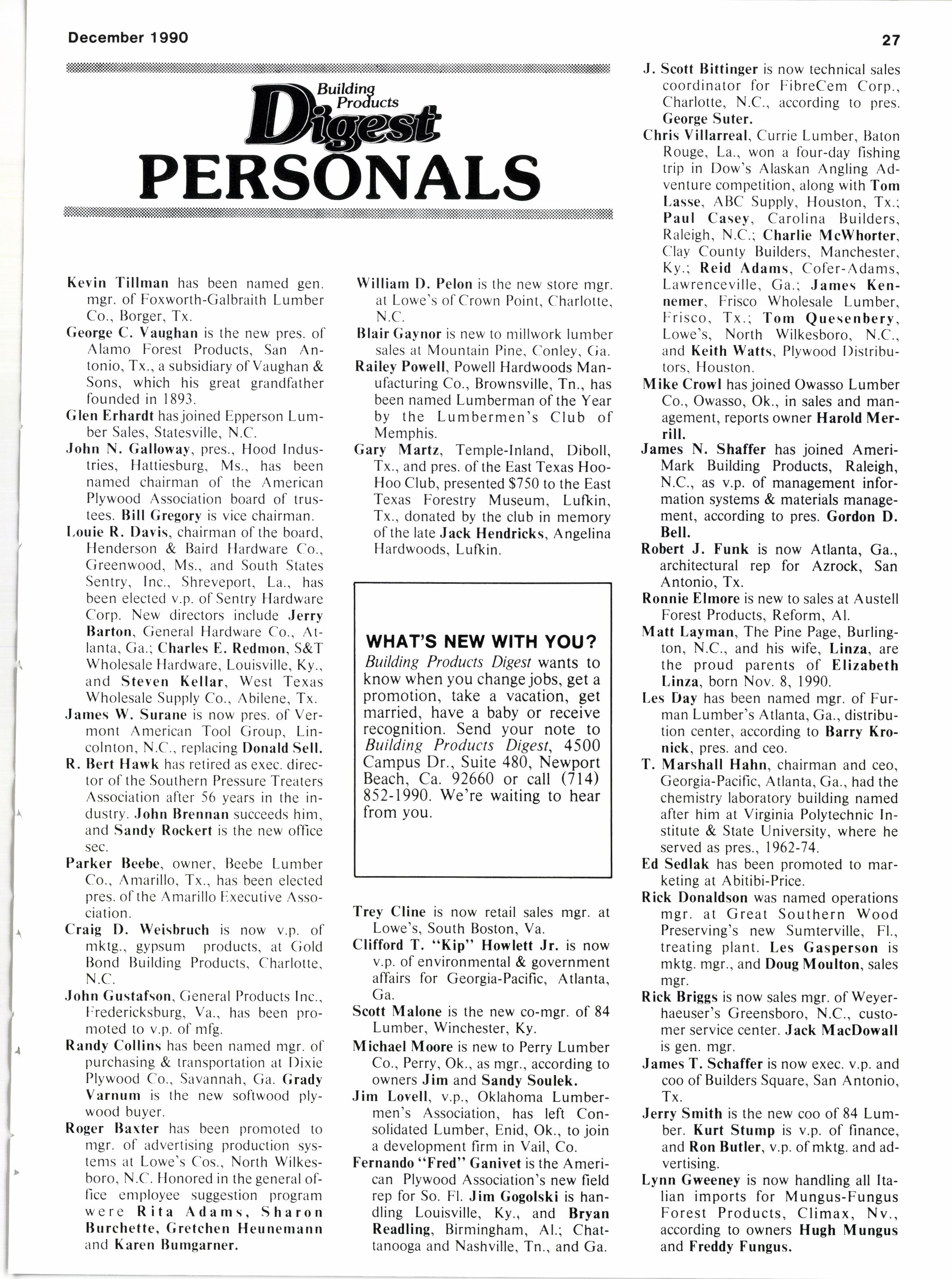
1 minute read
&t:,"ifru
while dealing with the complexitites of the '90s economy.
Amidst rumors of a recession - a slumping economy, rising oil prices and high interest rates - every business needs to take notice. While no one is ever recession-proof, the home improvement industry is, to a large degree, recession resistant. As the real estate market softens and houses become harder to sell, people tend to spend more time and money repairing and remodeling existing homes. Since a home represents a principle investment, there are strong economic reasons to enhance and preserve it.
In our industry, we sell lumber mainly for additions or repairs, whereas lumber yards are traditionally more dependent on the number of housing starts. Our locations carry broad assortments of materials and brand name products that make the home improvement process simpler and more productive. With this in mind, I feel that one of the largest growth areas in the next year will be the warehouse segment of the home improvement industry. Warehouse formats have built-in economics that allow them to operate with lower expense ratios while providing a convenient, one-stop resource.
This is not to imply that there will not be room in the industry for more traditional home centers and mom and pop hardware stores. The key to success for each type of retailer in the industry is to establish a comfortable niche. While small hardware operations cannot compete with the large home centers on price or selection, they have the advantage of knowing their customers on a first name basis and initiating long-term relationships.
Retail leaders in the '90s will be those that maintain excellence. not just in planning, but in execution. Customer service will be an important factor, as will the ability to maintain a competitive price policy. Informational programs, that help customers gain both the confidence and skills necessary to become do-ityourselfers, are a necessary part of educating and expanding your customer base. The most successful retailers will tailor their businesses to be area-specific with both marketing programs and merchandise mix individualized for each geographic region. The challenge will be to add service features while maintaining a healthy profit margin,
Story at a Glane
Biggpst grouffr in warchouse re tail, though uell run traditional and small operatorc can prosper if they senre a niche. exceF lence in execution will mark the leaders.



